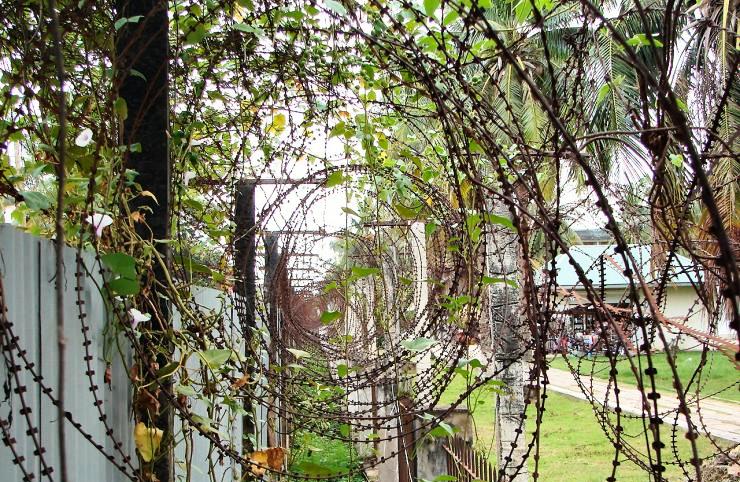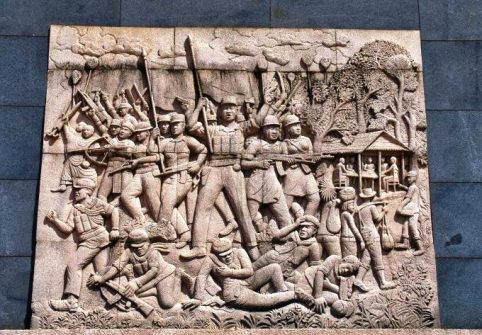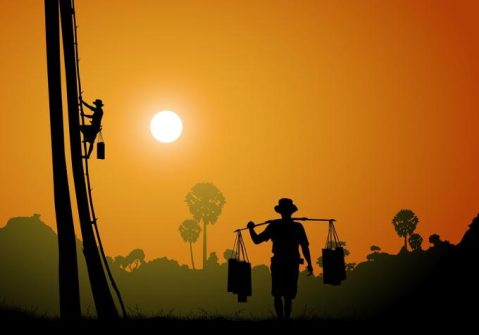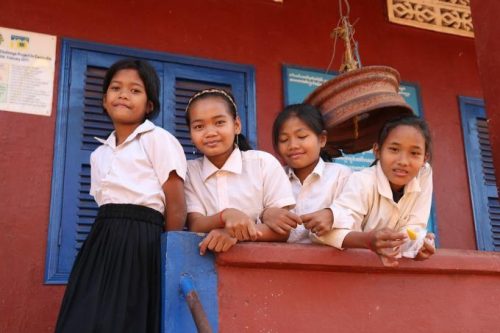The Khmer Rouge’s reign of terror.

Pol Pot’s regime caused one million seven hundred thousand deaths, devastating families and the entire country.
Being a French protectorate brought no significant changes in Cambodian life or economy except for introduction of more formal rules for civil registration and education.
Thus, the pagoda monks retained responsibility for primary schools but were required to obtain state teaching diplomas to professionalise and improve the quality of the education provided.
The administration was developed by the protectorate: centralised from the capital Phnom Penh and transmitted to the respective cities of the provinces. It was not able to prevent a form of cronyism between users of administrative services and the officials responsible for them, thus corruption was allowed to take hold. The rise in poverty, after the end of the protectorate and the political challenges of corrupt power, led Cambodia to civil war with the coming to power of the leaders of the movements grouped under the name of Khmer Rouge.

A plaque at the stupa/monument to mark the formation of the Kampuchean United Front for National Salvation monument on 2nd December 1978 in Kratie Province. Shutterstock /AlanMorris
The Chinese-inspired Khmer Rouge regime from 1975 to 1979 had the same devastating effect as the cultural revolution in China. From a human, social and economic point of view, the death toll from the deadly violence associated with the Maoist ideology that animated the Khmer Rouge cadres devastated whole families and the entire country.
In 1979, Vietnam, then politically affiliated with the former USSR, ended the Khmer Rouge regime by sending its army into Cambodia with the help of dissident officers of the Khmer Rouge regime. The Vietnamese military officially left the country after the signing of the Paris Agreement in 1991. It was only from that year on that the country gradually regained its sovereignty and saw its economy slowly recover. As a first step, many non-governmental organizations, financed by the United Nations and donor countries, helped the country and the government in the work of reconstruction. The results of these actions are mixed.
While many development programs have had significant results, others have led to the diversion of funds into the country’s power circles and the spread of corruption.

Cambodian families who had been displaced lost everything. Pixabay
Cambodian families who had been displaced lost everything: their marital status, family members, land, homes, properties, property titles, etc. They were unable to reclaim anything of their pre-Civil War possessions. The watchword, which became law, was: “First come, first served”. This made it possible to generate, without faith or law, the movable and immovable heritage of a well-informed family, which had so far been a source of conflict. The economy, although growing at an impressive annual rate, started from a very low base. Everything had to be rebuilt: the country’s electricity grid and, first and foremost, access to and distribution of drinking water. The education and training of children and young people was a difficult topic. By taking responsibility for education as a whole, the government centralized its administration.

The quality of schools and the motivation of teachers in urban centres and in the areas surrounding the capital have created a gap with rural areas. Pixabay
The pagodas lost responsibility for primary schools: teachers became state officials. All intellectuals had been eliminated by the Khmer Rouge regime and professors had been arrested and killed in large numbers. The government has had to appeal to people of goodwill who are poorly educated and demotivated due to low wages and rather limited material conditions of education. The quality of schools and the motivation of teachers in urban centres and in the areas surrounding the capital have resulted in a gap with rural areas.
In recent years the government has paid more attention to the quality of teacher training and its distribution across the country.
However, the final dropout rate for pupils is still significant, as poor families take on large debts for their children’s education. Young people leave school too soon, to go to work. At the same time, we are seeing the emergence of an educated middle class in cities. (Open Photo: The former S-21 Security Prison, now Tuol Sleng Genocide Museum in Phnom Penh, Cambodia. CC BY-SA 4.0/Bjørn Christian Tørrissen)
(F-X. D.)



